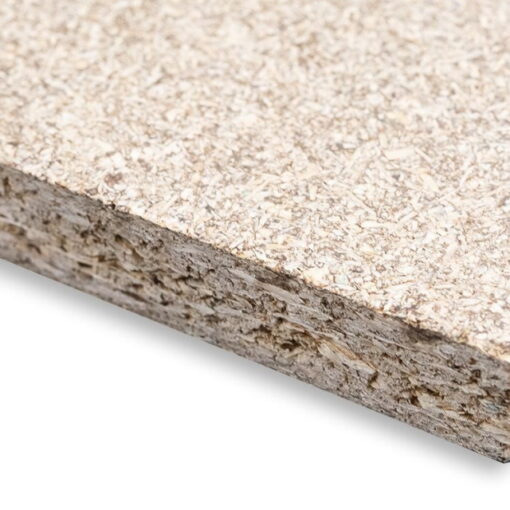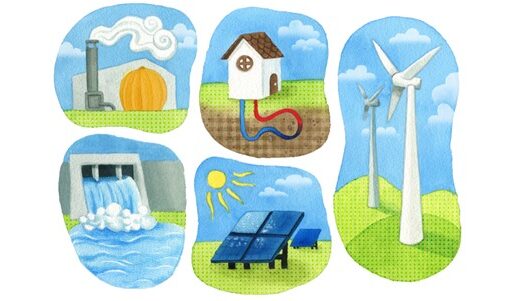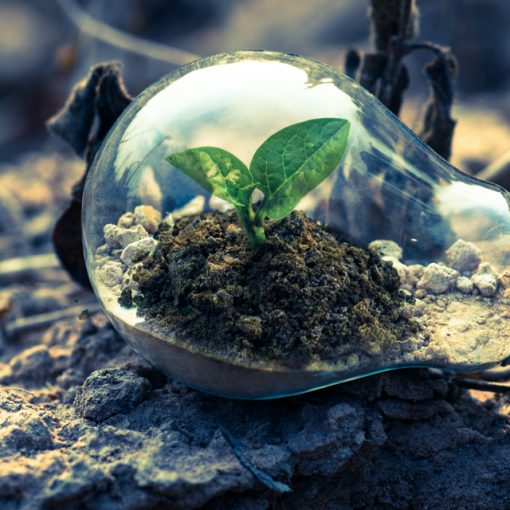Higher integration of renewables in the industry will achieve long-term energy independency and the stability of production prices. It is necessary to launch supportive incentives to encourage private uptake of such technologies by the industry. The aim of the RESINDUSTRY – Policies for Renewable Energy Sources in Industry – project is to boost the use of renewable energy sources in industrial applications by improving regional policies. This could be achieved by exchanging existing good practices and knowledge, and site visits to stimulate related funding and investments.
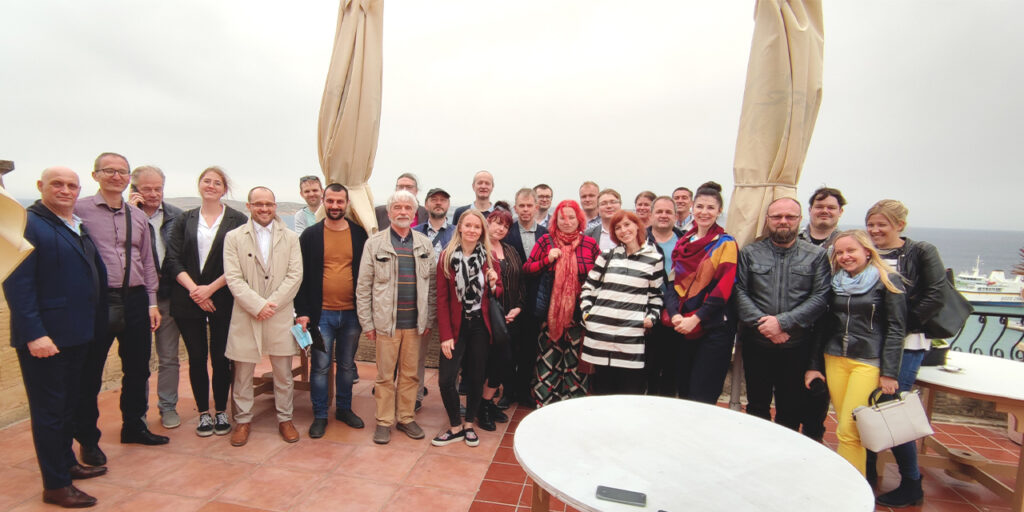
Good Practice from Gozo
One of the RESINDUSTRY good practices, FXB Group, manufactures furniture for domestic and the EU markets, including various hotel furnishing projects. The company’s location on the island of Gozo brings logistics challenges. All raw materials for production need to be imported, first to Malta and then further to Gozo. Finally, the main market is back in Malta. (Caruana 2022; F.X.B Group 2022.)
The operation of such furniture manufacturing operation is quite an energy demanding. The factory consumes around 800 MWh annually. FXB decided to use solar and wind energy to partially cover the energy demand. The PV system consists of 409 polycrystalline PV panels, with a peak power of 245Wp per each, leading to the whole installation’s peak power of 100.20 kWp. In addition, a 16m high and 3m in diameter vertical axis wind turbine generates 4kW. With a total annual energy generation of nearly 160 MWh, renewables cover 20 % of the company´s total energy consumption. (Borg 2022; Cefai 2022.)
Link to “Installation of solar photovoltaic system and vertical axis wind turbine at FXB Industrial Estate” Good Practice
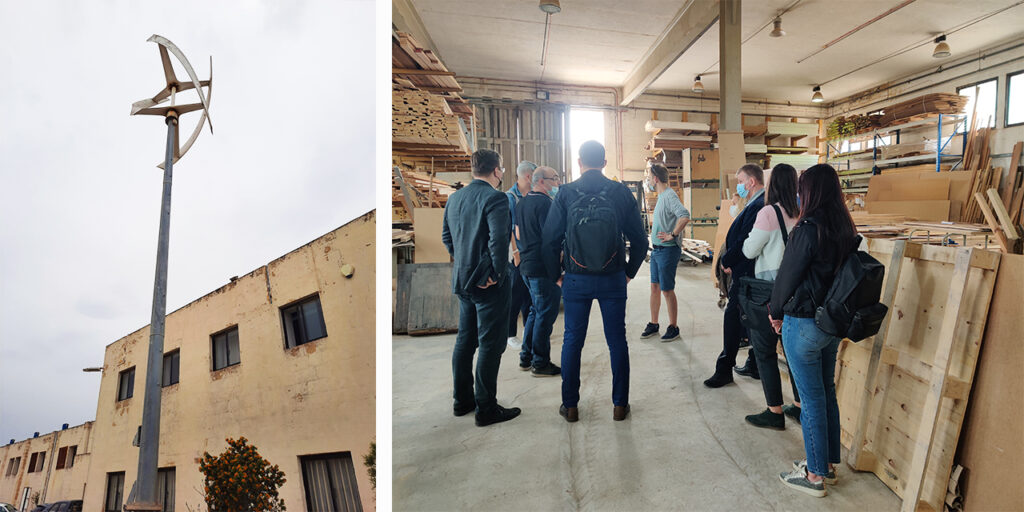
Furniture manufacturers – Gozo vs Finland
While visiting FXB, Asko Dahlbom, the Director at Isku furniture company, noticed that the annual electricity production of solar panels is only around 11 % more in Malta than in Lahti, Finland. In Malta, the bureaucratic process of renewable investment is time-consuming when authorities are not so familiar with new technical features. In comparison, for the Isku project in Lahti, it took about 2 months to get all required permissions from authorities. In Finland, the electricity grid is in a very good technical condition for new green energy investments, whereas in Malta, companies are pushed to finance the energy infrastructure upgrade at own costs.
In Finland, Isku is using renewable energy in all showrooms and production facilities in Lahti. The 72 000 m2 Isku Center in Lahti has 47 geothermal wells, which are 320 m deep to produce heat in winter and provide cooling in summer. In 2018, 300 PV panels were installed on the roof. Between 2021 – 2022, a solar power park of 6000 PV panels has been installed on the ground with full production expected from July 2022. The 2,8 MW Isku’s solar power park will generate nearly 2500 MWh of energy annually, reducing the CO2 emissions by around 355 tons.
Isku plans to go even further by adding 13 more geothermal wells to produce heat and cooling for an additional 10 000 m2 in Isku Center. Also, 1600 PV panels can be installed on the roof. Inspired by the visit to FXB in Gozo and their combined energy production using a wind turbine and PV panels, Isku prepares a feasibility study of such a solution for industrial sites in Puhos and Kitee, Finland. Combining renewable energy sources is a promising approach for industrial areas of energy production.
Authors
Asko Dahlbom who works as a Director at Isku Yhtyma Oy.
Katerina Medkova works as an RDI specialist at LAB University of Applied Sciences and is a Project & Communication Manager in the RESINDUSTRY project. RESINDUSTRY is supported by the Interreg Europe Programme funded by the European Regional Development Fund (ERDF) and co-financed by the participants.
References
Borg, Ch. 2022. F.C.X. Group – Wind Turbine and Photovoltaic Panels. Presentation given at RESINDUSTRY Interregional Event on 28 April 2022.
Caruana, I. 2022. History of F.C.X. Group. Presentation given at RESINDUSTRY Interregional Event on 28 April 2022.
Cefai, J. 2022. F.C.X. Group & Industry. Presentation given at RESINDUSTRY Interregional Event on 28 April 2022.
F.X.B Group. 2022. About us. Cited 27 Jun 2022. Available at: https://www.fxb.com.mt/about-us
Links
Link 1. Interreg Europe. 2020. Installation of solar photovoltaic system and vertical axis wind turbine at FXB Industrial Estate. Cited 10 Jun 2022. Available at https://www.interregeurope.eu/good-practices/installation-of-solar-photovoltaic-system-and-vertical-axis-wind-turbine-at-fxb-industrial-estate
Link 2. Interreg Europe. 2022. Project Summary. RESINDUSTRY. Cited 08 Jun 2022. Available at https://projects2014-2020.interregeurope.eu/resindustry/


